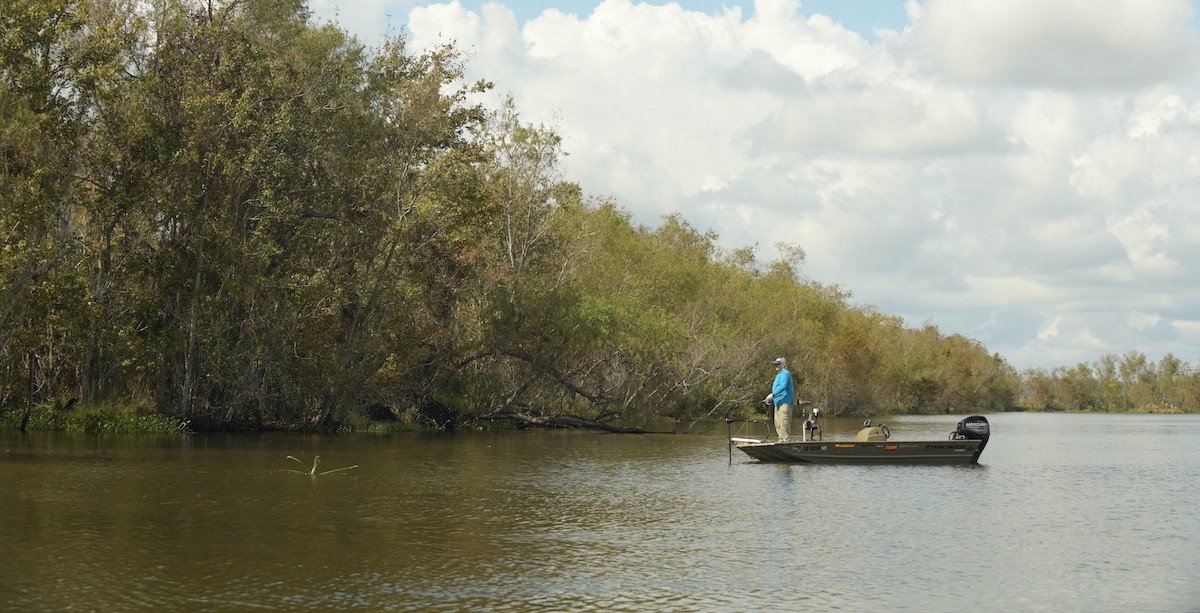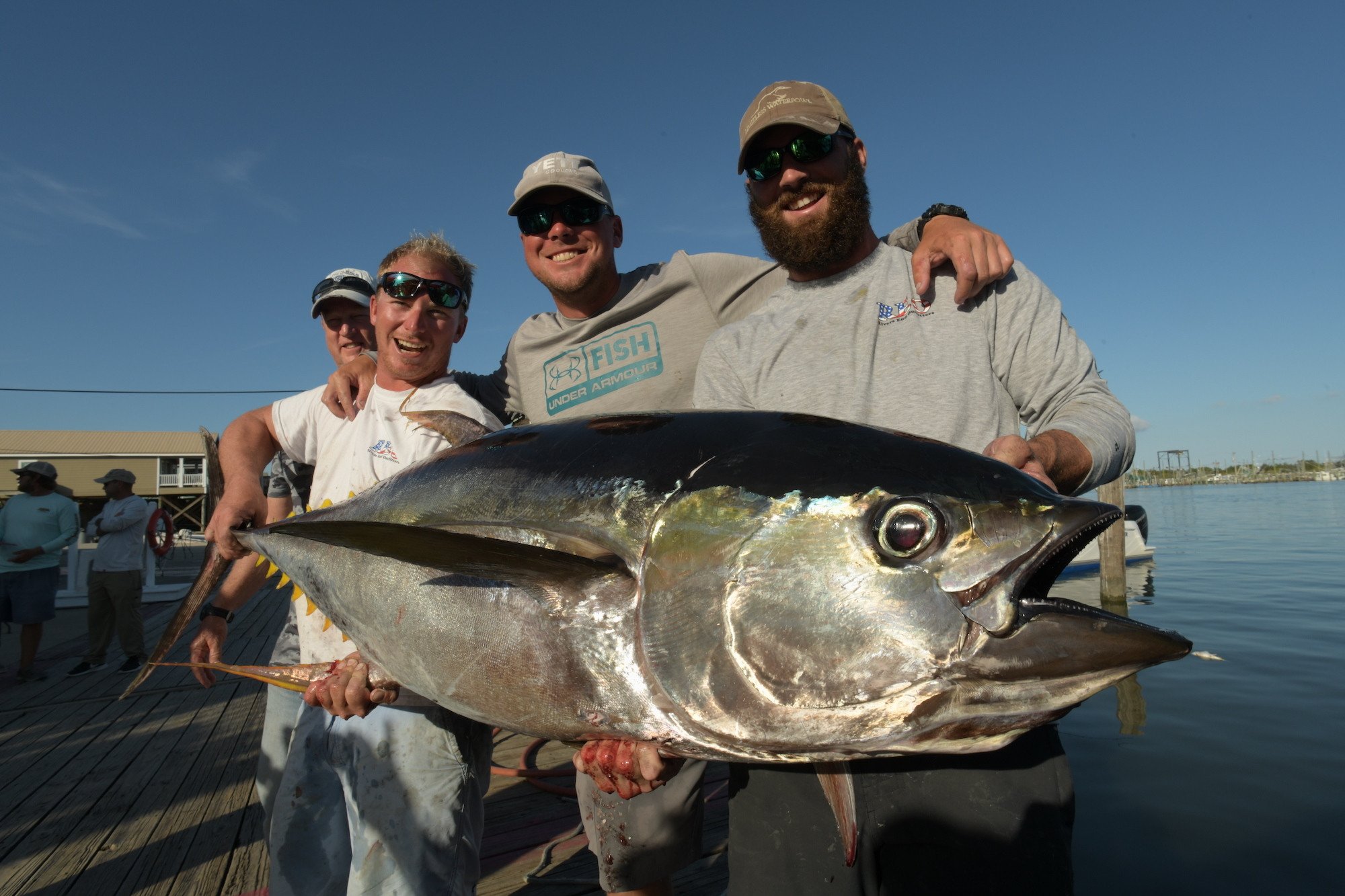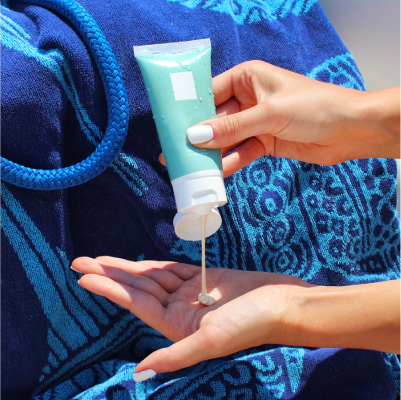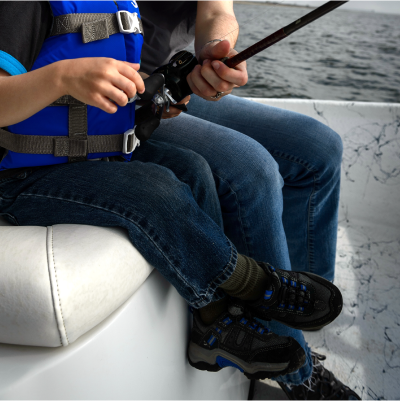
From the clear skies and sunshine of summer to the mild temperatures and abundance of fish in fall, there’s no bad time to go fishing in Louisiana. If you’re planning a fall trip to the boot, make sure you add a once-in-a-lifetime fishing adventure to your itinerary. Check out our first-timers’ guide to learn more about what to expect during your excursion in The Pelican State.
Deciding Between Inshore Fishing and Offshore Fishing
This is the first decision to make when booking your charter. Your choice determines how long your outings last, what kind of fish you catch, what kind of license you need, and more. Here are the biggest differences between inshore and offshore fishing.
Inshore
This is simply fishing within a few miles from the shore in shallow waters (around 30 meters at most). You can fish inshore from a pier, from a rocky piling, around an artificial reef, or from a charter boat. You can even stand in shallow water and fish. Your charter captain will steer you to the sweet spots.

Travel time is much shorter in inshore fishing. If you start early, you could have a successful outing and enjoy a late lunch afterward.
There’s no shortage of popular species inshore:
- Redfish (also called red drum)
- Black drum;
- Sheepshead
- Flounder
- Speckled trout
- Largemouth bass
- Catfish
- Crappie
Fishing inshore is a great way to get your sea legs and learn from experienced anglers. The weather is somewhat more predictable inshore than out in the open waters. Most of the equipment is light and beginner-friendly.
That’s not to say that inshore fishing is less exciting or productive than fishing in the deep. Chasing fish with a spirited boat captain is a thrilling ride. In the fall, it’s not uncommon to catch the limit on plentiful fish like speckled trout and redfish.
Offshore
Those giant, stuffed fish that people hang on their den walls were most likely caught offshore. Big species tend to like the cold, deep water at least 15 miles out. That’s why offshore trips start so early — around 6 a.m. — and can take anywhere from eight to 12 hours. Some charter captains even offer overnight or multiple-day excursions.

The Gulf of Mexico is teeming with fish that thrive in its natural and manmade features. Craters and slopes on the sea floor create extreme variances in temperature. That’s why the game fish in Gulf Coast waters are so diverse.
You’re going to need a bigger boat for these species:
- Yellowfin and amberjack tuna
- Wahoo
- Snapper
- Grouper Marlin
- Mahi
- Mahi
- Cobia
- Sailfish
- Mackerel
Some of these fish put up a heck of a fight. You could be in for the thrill of a lifetime.
Expecting the Unexpected: Water and Weather Conditions
Before they ever brew their first cup of coffee, old-timers check fishing conditions. Tides and weather pretty much dictate when and where you fish. Daily fishing reports on the internet, radio or TV will help you avoid unpleasant surprises.
What To Wear
The elements seem far more intense on a fishing boat than in your landscaped backyard. This is especially true in the fall when temperatures vary more between the morning and evening hours. Being prepared will ensure your charter fishing experience is safe, fun, and packed with great memories.

LAYERED CLOTHING
Whether you fish inshore or offshore, a trip takes hours. Temperatures fluctuate without warning, and it might be 10 to 20 degrees hotter or cooler on the water than on land. A sweatshirt of perfect weight for the dawn makes you miserable by mid-morning. Stuff gets wet. Stuff gets dirty. Those in the know wear light, loose layers that are easy to peel off or put back on. A lightweight rain poncho or waterproof windbreaker can’t hurt. In winter, long johns can make or break your experience.

SUN PROTECTION
Even on cloudy days, it takes no time at all for your skin to burn. You’re contending not only with the sun itself but with its reflection on the water. Wear sunscreen and waterproof clothing with built-in sun protection. Always cover your head and invest in polarized sunglasses. They don’t just protect your eyes; they also help you see fish under the surface.

SENSIBLE SHOES
People swear by their favorite deck boots, slip-on deck shoes, non-skid sneakers, specially designed flip-flops, or even their bare feet — whatever. The idea is to prevent injury while staying comfortable.
What To Bring
Many charter captains provide basics like live bait, simple rods and reels, water bottles, ice and first-aid items. Some will even help you with licensing and lodging.
Ask your captain what’s included. Here are some extra suggestions:
- Special fishing equipment you’d like to try
- An ice chest for catches
- Food and drinks (Ask permission for alcoholic beverages.)
- A camera
- Binoculars
- Waterproof fanny packs or resealable bags for IDs, licenses, phones and more
- Cash for any fish-cleaning fees and tips
- Bug spray
- Seasickness remedy for choppy waters
Hiring a Charter Captain
Yes, you can trim your own trees or do your own taxes, but should you? It’s the same with fishing, especially for first-timers: Trusting a pro to pilot the boat and find the fish can make all the difference.
Louisiana Charter Boat Association captains have knowledge, skills and experience. They’ll blow your mind with local folklore and history. They can answer questions about the best bait, gear and techniques for saltwater and freshwater outings. They’re sea wildlife experts. They have endless tips and great fishing stories.
Our captains customize trips for all ages, occasions and skill levels. Your guide will truly make it “your day.” It’s easy to book through LCBA, and there are plenty of captains to choose from.
Start a memorable adventure now by exploring our captain profiles.
STAY CONNECTED
Join our mailing list and receive our newsletter with fishing updates, reports, stories, photos and other interesting tidbits to get you excited about Louisiana fishing!



